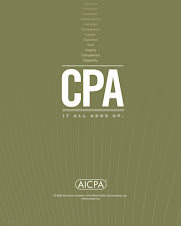Mitch
Mitch, this is a very timely question. You should make sure that you are working with a knowledgeable professional that knows all of your circumstances. Here is some general information.
As I mentioned, this is a very timely question in that the IRS has begun taking a harder look at S-corps.
According to IRS figures, the "average" S corporation delivers approximately 41.5% of its economic benefit to shareholders in the form of salary and the remaining 58.5% in the form of K1 distributions. Of course, that's just an average, and covers a lot of different circumstances. Former Presidential candidate and famed philanderer John Edwards organized his law practice as an S-corporation four years before joining the U.S. Senate. He paid himself a salary of $360,000, and avoided over $562,000 in Medicare tax during those years four years.
The key to paying "reasonable compensation" is to determine how much comparable employees are paid by comparable corporations to perform comparable work. Unfortunately, neither the internal revenue code nor treasury regulations offer specific guidance for determining "reasonable compensation."
In some cases, you can use industry averages and surveys.
You can find salary data:
- Online
- From the economic development departments
- Local want ads
- Industry publications
- The State of Federal Departments of Labor
- Parade magazine has an annual “What Do They Make” issue
You can answer the question, "what are you paying people doing a similar job at your workplace?"
These questions will become more important as Washington starts taking a closer look at S corporation issues -- especially those involving shareholder compensation. The General Accounting Office just released a report, Actions Needed to Address Noncompliance with S Corporation Tax Rules, revealing several areas of concern:
For starters, 68% of S-corps filing returns for 2003 and 2004 misreported at least one item. 80% of those errors favored the taxpayer.
13% of S corporations paid inadequate wages to shareholders. The smallest corporations, those with 1-3 shareholders, were the worst offenders.
Several options exist for closing that "wage gap." They include:
- making all S corporation income subject to employment tax,
- making all service business income subject to employment tax, or
- making all active shareholder or majority shareholder income subject to employment tax.
These changes would require legislation -- and Congress has shown no great appetite for changing S corporation income rules.
Because the S corporation is such a popular strategy we keep a close eye on these issues.
Good luck with your new form of business. Let me know if you have any other questions.
Larry Kopsa CPA



No comments:
Post a Comment